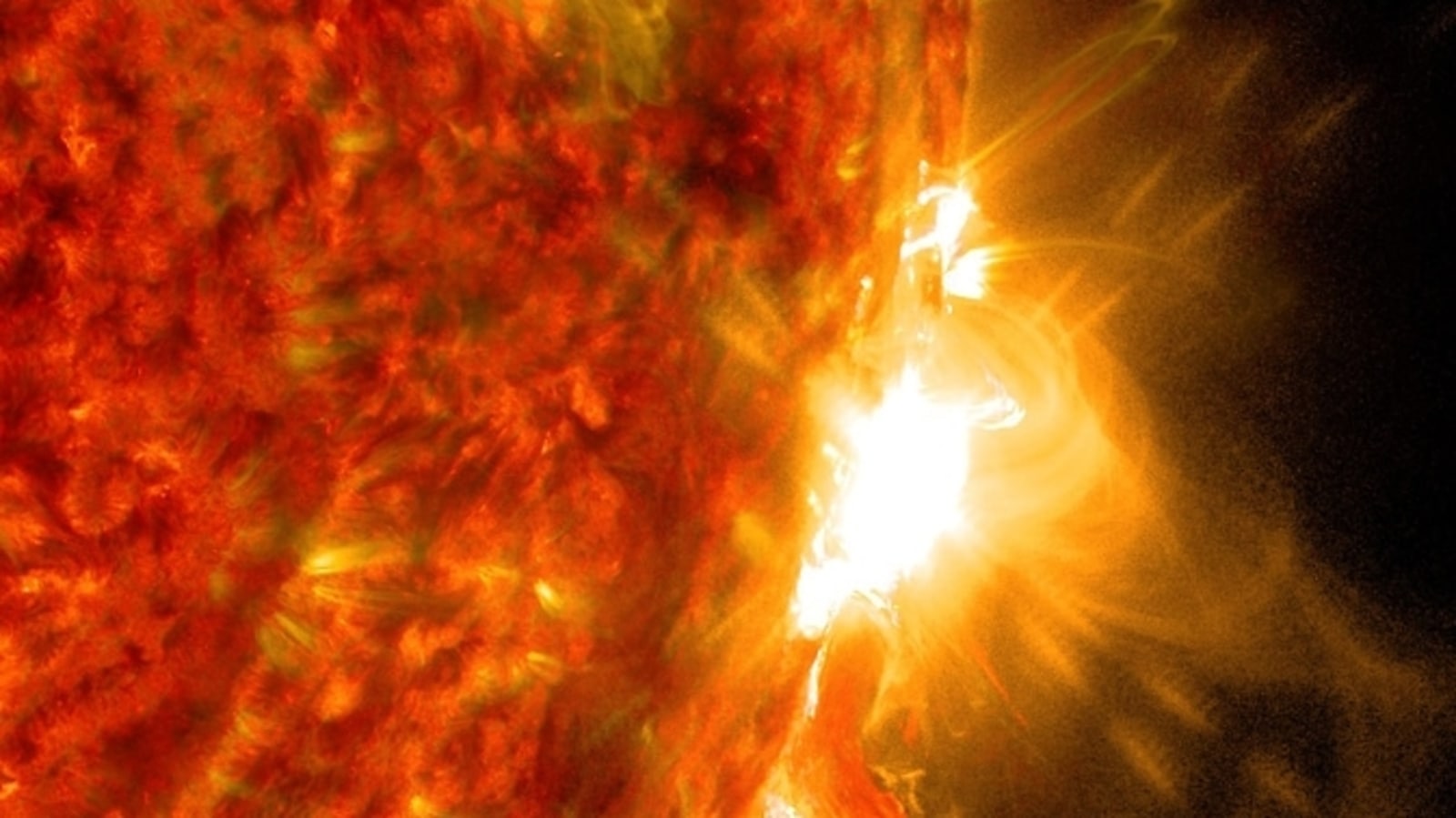Bizarre! Solar flares can be hotter than the Sun
NASA has spotted several giant solar explosions in the past few months. Here are some interesting facts about these solar flares.
The Sun has been in a pretty active state in its latest 11-year cycle. As a result of increased activity, scientists and researchers have observed multiple solar flares and Coronal Mass Ejections, some of which have been directed at Earth and some that have not. Fortunately, all the big ones so far have missed earth. While, no major effect has been seen as of now, a really powerful solar storm could create havoc on earth and cause GPS, radio and power grid blackouts. According to NASA, solar flares are an intense burst of radiation caused due to the release of magnetic energy from sunspots. Dark spots on the Sun’s surface are called sunspots as they are cooler than other areas of the Sun’s surface. However, it’s still somewhere around 6,500 degrees Fahrenheit. The magnetic field lines near these sunspots frequently rearrange, cross, and tangle causing a solar flare, which is a quick explosion of energy. A lot of radiation is thrown into space by solar flares.
Here’s everything you need to know about Solar fares and CMEs.
What is a solar flare?
A solar flare is a powerful burst of radiation caused by the release of magnetic energy from a sunspot. They are the greatest explosive events of the Solar System. They appear as bright areas in the sun and can last for a minute to several hours. A solar flare is visible by the photons (or light) it releases, at almost every wavelength of the spectrum. X-rays and optical light are the primary methods used to observe these solar flares.
How hot are solar flares? Well, according to NASA, the temperature in a solar flare can reach anywhere between 10 million degrees Kelvin (18 million degrees Fahrenheit) to 100 million degrees Kelvin. If you compare that with the temperature in the core of the Sun, then that is 27 million degrees Fahrenheit (15 million degrees Celsius).
What causes a solar flare?
The sun’s surface is a pretty active region containing electrically charged gasses that generate strong magnetic fields in some regions. These electrically charged gasses generate powerful magnetic fields that are stretched, twisted, and tangled due to rotating gases. This also leads to solar activity.
What are CME?
Coronal mass ejections, or CMEs, are large clouds of solar plasma and embedded magnetic fields released into space after a solar eruption. CMEs expand as they sweep through space, often measuring millions of miles across, and can collide with planetary magnetic fields, says NASA.
For all the latest Technology News Click Here

